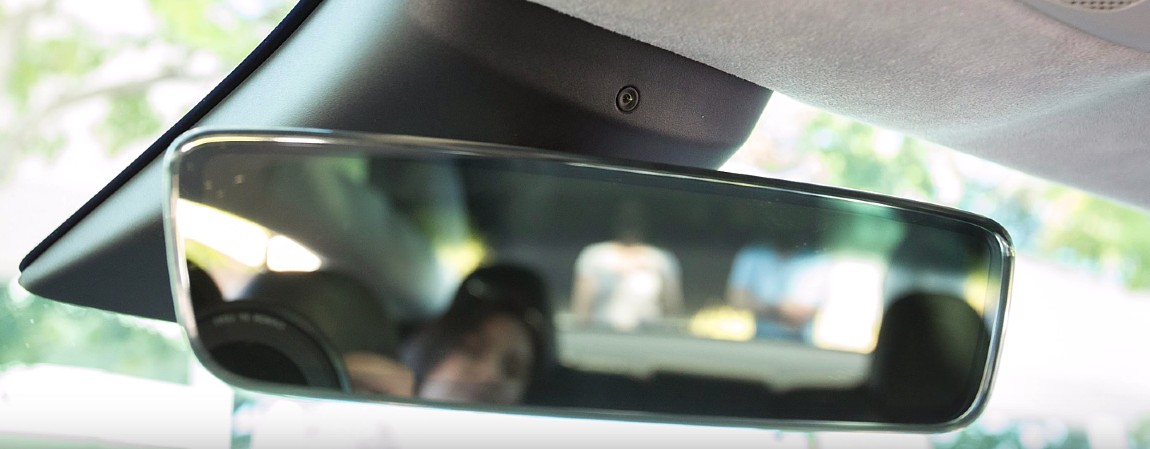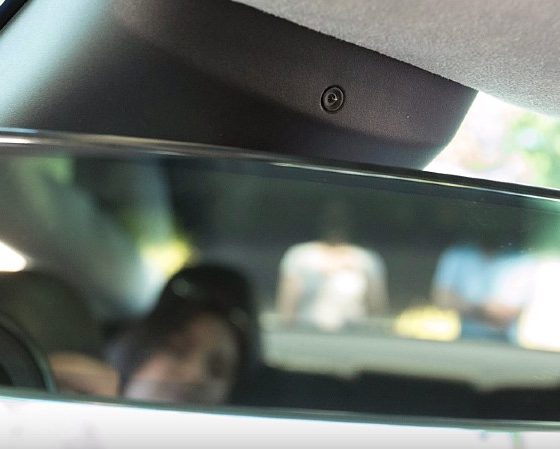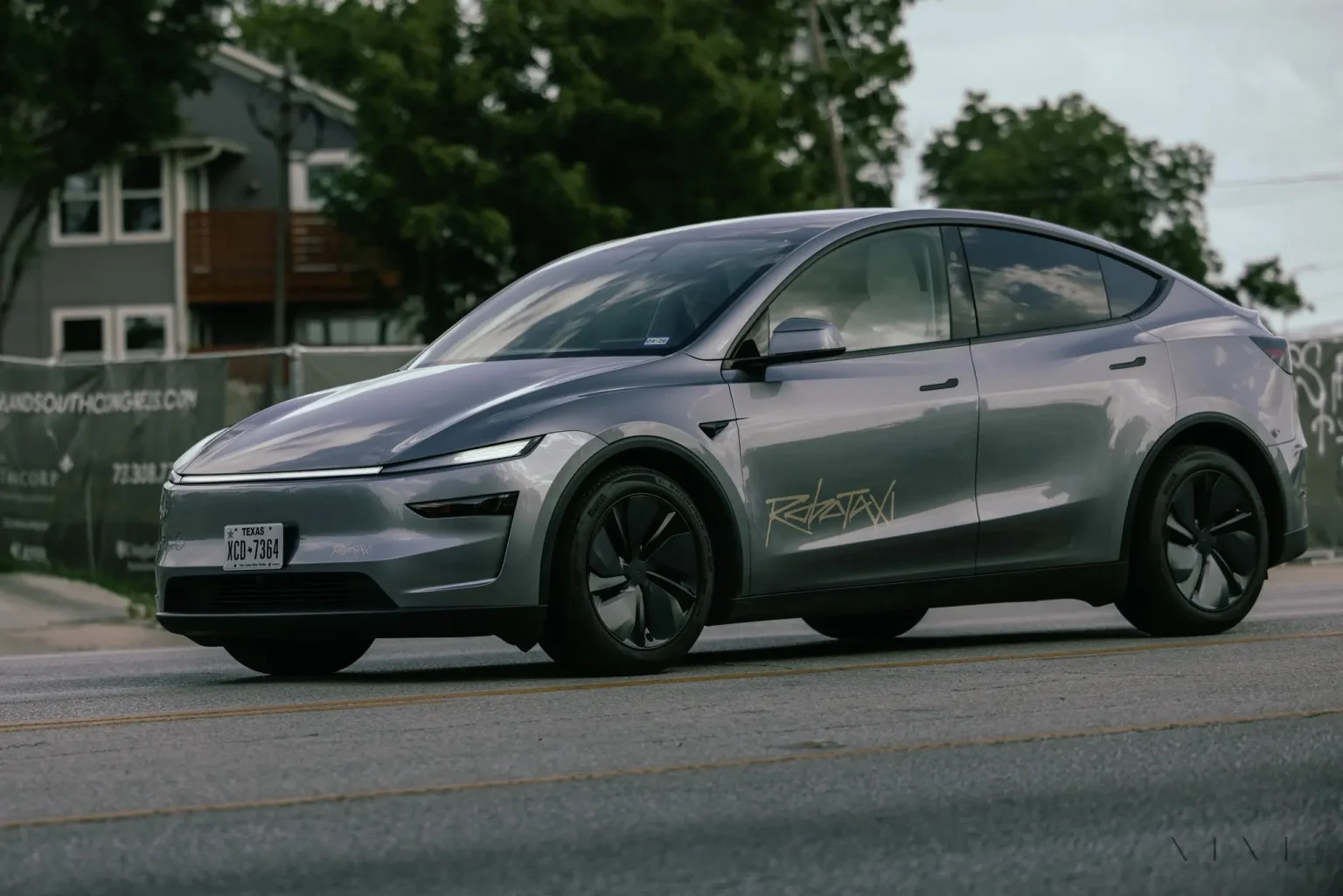

News
Tesla’s camera-based driver monitoring system triggers legal complaint in Illinois
Tesla has implemented a number of safety improvements for its Autopilot and Full Self-Driving suites over the years, and this includes updates to its driver monitoring systems (DMS). Last year, Tesla activated its camera-based driver monitoring system in Model 3 and Model Y vehicles, allowing the company to provide an extra layer of checks to determine if drivers were paying attention to the road while using Autopilot and FSD features. The function was later rolled out to the refreshed Model S and Model X as well.
While a camera-based DMS has evident advantages, a class action complaint has been proposed against Tesla in Illinois, with the Plaintiff claiming that the company’s in-cabin driver monitoring system violates the state’s Biometric Information Privacy Act (BIPA). The complaint was filed in an Illinois Circuit Court on March 11, 2022.
In the complaint’s introduction, the Plaintiff described how Tesla benefits from the data it collects from its fleet of vehicles. Following is a relevant section from the document.
“In an effort to facilitate its Autopilot features and help market its self-driving capability to boost sales, Defendant collects individuals’ biometrics in the form of their facial geometry so that it can verify and make sure that individuals are paying attention to the road while using its Autopilot advanced driver assistance system (“Autopilot”) and its premium Full Self Driving system (“FSD”).
“This is achieved through Tesla’s in-cabin camera located by the rearview mirror which extracts drivers’ biometric facial geometry that Defendant’s Autopilot uses to track their head positions and eye gazes to detect a driver’s inattentiveness. If the driver is inattentive, then the Autopilot function is disengaged and the driver must take over the steering function.”
Inasmuch as data from the in-cabin camera is being used for driver monitoring, the Plaintiff alleged that Tesla’s practices violate Illinois citizens’ statutorily protected privacy rights. This was discussed in the following section of the complaint.
“Facial geometry is a unique and permanent biometric identifier associated with each individual. The unauthorized handling of such sensitive information exposes consumers to serious and irreversible privacy risks. If for example, a database containing scans of face geometry or other sensitive biometric data is hacked, breached, or otherwise exposed, consumers cannot simply change their biometric identifiers like they could reset a password or cancel a credit card.
“Notwithstanding the clear and unequivocal requirements of the law, Defendant disregards Illinois citizens’ statutorily protected privacy rights and unlawfully collects, stores, and uses individuals’ biometrics without first obtaining those individuals’ informed written consent and without having any publicly available data retention policy that could inform them about the whereabouts of the facial biometric data Defendant gatherer as required by BIPA.”
Interestingly enough, the Plaintiff included an anecdote of Tesla’s camera-based DMS in action. Based on the incident outlined in the complaint, it appears that the Plaintiff was warned by his vehicle to keep his hands on the wheel. This is a critical safety check, especially as Tesla rolls out more advanced features of its Autopilot and FSD suite.
“In or about December 2021, Plaintiff was driving one of Defendant’s Model 3 cars in Illinois with Defendant’s Autopilot feature function engaged. Using its proprietary facial recognition technology, Defendant collected, stored, and analyzed Plaintiff’s facial geometry in order to be able to track his head and eye movements and make sure that he was attentive. Plaintiff experienced Defendant’s biometrically enabled technology first-hand as it continuously informed Plaintiff to put his hands back on the wheel whenever it detected him looking away from the road.”
The class action complaint seeks to collect statutory damages of $5,000 for every time Tesla willfully or recklessly violated Illinois’ Biometric Information Privacy Act. It also seeks to collect statutory damages of $1,000 for each negligent violation of the state’s BIPA. Tesla’s legal team, for its part, is yet to issue a response to the complaint.
Below is the class action complaint against Tesla’s camera-based driver monitoring system (as shared by Bloomberg Law).
Tesla Cabin Camera Lawsuit by Simon Alvarez on Scribd
Don’t hesitate to contact us with news tips. Just send a message to simon@teslarati.com to give us a heads up.

News
Tesla FSD fleet is nearing 7 billion total miles, including 2.5 billion city miles
As can be seen on Tesla’s official FSD webpage, vehicles equipped with the system have now navigated over 6.99 billion miles.

Tesla’s Full Self-Driving (Supervised) fleet is closing in on almost 7 billion total miles driven, as per data posted by the company on its official FSD webpage.
These figures hint at the massive scale of data fueling Tesla’s rapid FSD improvements, which have been quite notable as of late.
FSD mileage milestones
As can be seen on Tesla’s official FSD webpage, vehicles equipped with the system have now navigated over 6.99 billion miles. Tesla owner and avid FSD tester Whole Mars Catalog also shared a screenshot indicating that from the nearly 7 billion miles traveled by the FSD fleet, more than 2.5 billion miles were driven inside cities.
City miles are particularly valuable for complex urban scenarios like unprotected turns, pedestrian interactions, and traffic lights. This is also the difference-maker for FSD, as only complex solutions, such as Waymo’s self-driving taxis, operate similarly on inner-city streets. And even then, incidents such as the San Francisco blackouts have proven challenging for sensor-rich vehicles like Waymos.
Tesla’s data edge
Tesla has a number of advantages in the autonomous vehicle sector, one of which is the size of its fleet and the number of vehicles training FSD on real-world roads. Tesla’s nearly 7 billion FSD miles then allow the company to roll out updates that make its vehicles behave like they are being driven by experienced drivers, even if they are operating on their own.
So notable are Tesla’s improvements to FSD that NVIDIA Director of Robotics Jim Fan, after experiencing FSD v14, noted that the system is the first AI that passes what he described as a “Physical Turing Test.”
“Despite knowing exactly how robot learning works, I still find it magical watching the steering wheel turn by itself. First it feels surreal, next it becomes routine. Then, like the smartphone, taking it away actively hurts. This is how humanity gets rewired and glued to god-like technologies,” Fan wrote in a post on X.
News
Tesla starts showing how FSD will change lives in Europe
Local officials tested the system on narrow country roads and were impressed by FSD’s smooth, human-like driving, with some calling the service a game-changer for everyday life in areas that are far from urban centers.

Tesla has launched Europe’s first public shuttle service using Full Self-Driving (Supervised) in the rural Eifelkreis Bitburg-Prüm region of Germany, demonstrating how the technology can restore independence and mobility for people who struggle with limited transport options.
Local officials tested the system on narrow country roads and were impressed by FSD’s smooth, human-like driving, with some calling the service a game-changer for everyday life in areas that are far from urban centers.
Officials see real impact on rural residents
Arzfeld Mayor Johannes Kuhl and District Administrator Andreas Kruppert personally tested the Tesla shuttle service. This allowed them to see just how well FSD navigated winding lanes and rural roads confidently. Kruppert said, “Autonomous driving sounds like science fiction to many, but we simply see here that it works totally well in rural regions too.” Kuhl, for his part, also noted that FSD “feels like a very experienced driver.”
The pilot complements the area’s “Citizen Bus” program, which provides on-demand rides for elderly residents who can no longer drive themselves. Tesla Europe shared a video of a demonstration of the service, highlighting how FSD gives people their freedom back, even in places where public transport is not as prevalent.
What the Ministry for Economic Affairs and Transport says
Rhineland-Palatinate’s Minister Daniela Schmitt supported the project, praising the collaboration that made this “first of its kind in Europe” possible. As per the ministry, the rural rollout for the service shows FSD’s potential beyond major cities, and it delivers tangible benefits like grocery runs, doctor visits, and social connections for isolated residents.
“Reliable and flexible mobility is especially vital in rural areas. With the launch of a shuttle service using self-driving vehicles (FSD supervised) by Tesla in the Eifelkreis Bitburg-Prüm, an innovative pilot project is now getting underway that complements local community bus services. It is the first project of its kind in Europe.
“The result is a real gain for rural mobility: greater accessibility, more flexibility and tangible benefits for everyday life. A strong signal for innovation, cooperation and future-oriented mobility beyond urban centers,” the ministry wrote in a LinkedIn post.
News
Tesla China quietly posts Robotaxi-related job listing
Tesla China is currently seeking a Low Voltage Electrical Engineer to work on circuit board design for the company’s autonomous vehicles.

Tesla has posted a new job listing in Shanghai explicitly tied to its Robotaxi program, fueling speculation that the company is preparing to launch its dedicated autonomous ride-hailing service in China.
As noted in the listing, Tesla China is currently seeking a Low Voltage Electrical Engineer to work on circuit board design for the company’s autonomous vehicles.
Robotaxi-specific role
The listing, which was shared on social media platform X by industry watcher @tslaming, suggested that Tesla China is looking to fill the role urgently. The job listing itself specifically mentions that the person hired for the role will be working on the Low Voltage Hardware team, which would design the circuit boards that would serve as the nervous system of the Robotaxi.
Key tasks for the role, as indicated in the job listing, include collaboration with PCB layout, firmware, mechanical, program management, and validation teams, among other responsibilities. The role is based in Shanghai.
China Robotaxi launch
China represents a massive potential market for robotaxis, with its dense urban centers and supportive policies in select cities. Tesla has limited permission to roll out FSD in the country, though despite this, its vehicles have been hailed as among the best in the market when it comes to autonomous features. So far, at least, it appears that China supports Tesla’s FSD and Robotaxi rollout.
This was hinted at in November, when Tesla brought the Cybercab to the 8th China International Import Expo (CIIE) in Shanghai, marking the first time that the autonomous two-seater was brought to the Asia-Pacific region. The vehicle, despite not having a release date in China, received a significant amount of interest among the event’s attendees.








